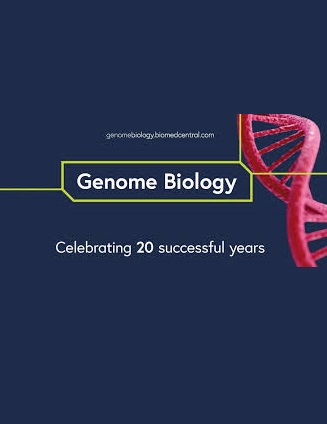scHolography: a computational method for single-cell spatial neighborhood reconstruction and analysis
IF 10.1
1区 生物学
Q1 BIOTECHNOLOGY & APPLIED MICROBIOLOGY
引用次数: 0
Abstract
Spatial transcriptomics has transformed our ability to study tissue complexity. However, it remains challenging to accurately dissect tissue organization at single-cell resolution. Here we introduce scHolography, a machine learning-based method designed to reconstruct single-cell spatial neighborhoods and facilitate 3D tissue visualization using spatial and single-cell RNA sequencing data. scHolography employs a high-dimensional transcriptome-to-space projection that infers spatial relationships among cells, defining spatial neighborhoods and enhancing analyses of cell–cell communication. When applied to both human and mouse datasets, scHolography enables quantitative assessments of spatial cell neighborhoods, cell–cell interactions, and tumor-immune microenvironment. Together, scHolography offers a robust computational framework for elucidating 3D tissue organization and analyzing spatial dynamics at the cellular level.scHolography:一种用于单细胞空间邻域重建和分析的计算方法
空间转录组学改变了我们研究组织复杂性的能力。然而,在单细胞分辨率下准确剖析组织结构仍然是一项挑战。我们在这里介绍一种基于机器学习的方法--scHolography,该方法旨在利用空间和单细胞RNA测序数据重建单细胞空间邻域并促进三维组织可视化。scHolography采用高维转录组到空间的投影,推断细胞间的空间关系,定义空间邻域并加强对细胞间通讯的分析。当应用于人类和小鼠数据集时,scHolography 能对空间细胞邻域、细胞-细胞相互作用以及肿瘤-免疫微环境进行定量评估。总之,scHolography 为阐明三维组织结构和分析细胞水平的空间动态提供了一个强大的计算框架。
本文章由计算机程序翻译,如有差异,请以英文原文为准。
求助全文
约1分钟内获得全文
求助全文
来源期刊

Genome Biology
Biochemistry, Genetics and Molecular Biology-Genetics
CiteScore
21.00
自引率
3.30%
发文量
241
审稿时长
2 months
期刊介绍:
Genome Biology stands as a premier platform for exceptional research across all domains of biology and biomedicine, explored through a genomic and post-genomic lens.
With an impressive impact factor of 12.3 (2022),* the journal secures its position as the 3rd-ranked research journal in the Genetics and Heredity category and the 2nd-ranked research journal in the Biotechnology and Applied Microbiology category by Thomson Reuters. Notably, Genome Biology holds the distinction of being the highest-ranked open-access journal in this category.
Our dedicated team of highly trained in-house Editors collaborates closely with our esteemed Editorial Board of international experts, ensuring the journal remains on the forefront of scientific advances and community standards. Regular engagement with researchers at conferences and institute visits underscores our commitment to staying abreast of the latest developments in the field.
 求助内容:
求助内容: 应助结果提醒方式:
应助结果提醒方式:


